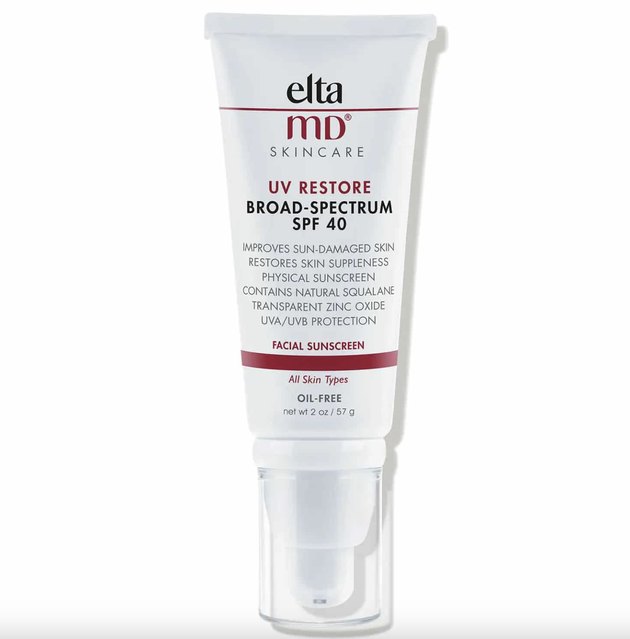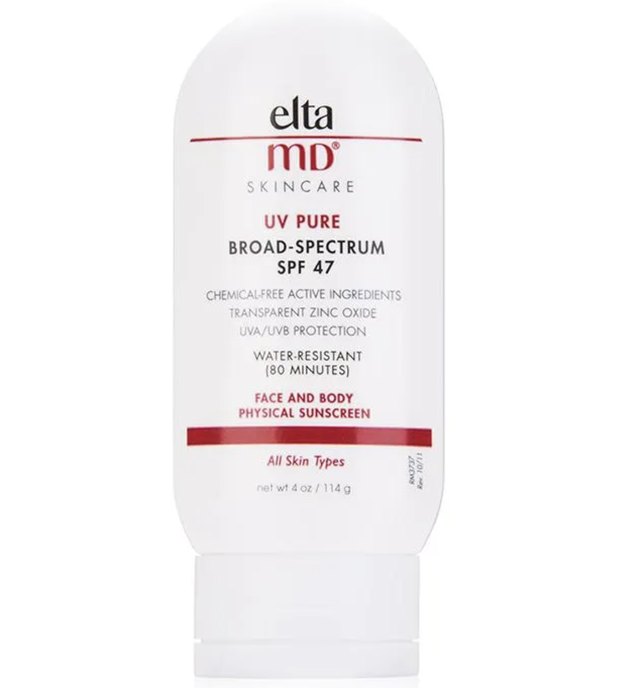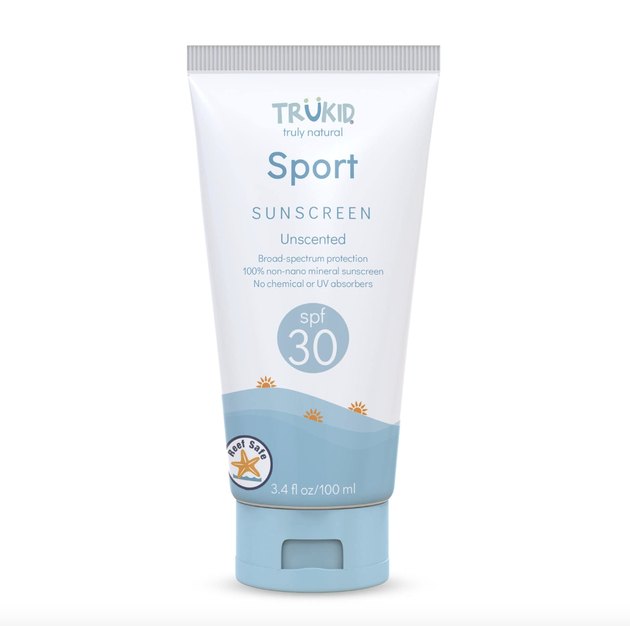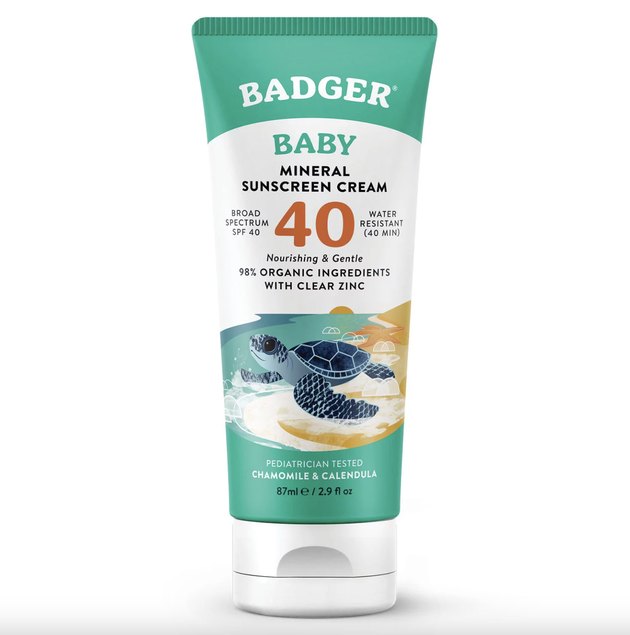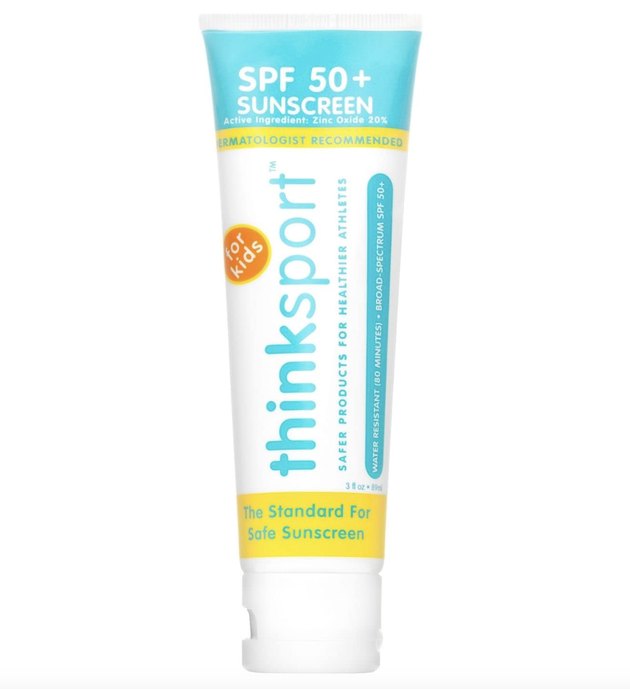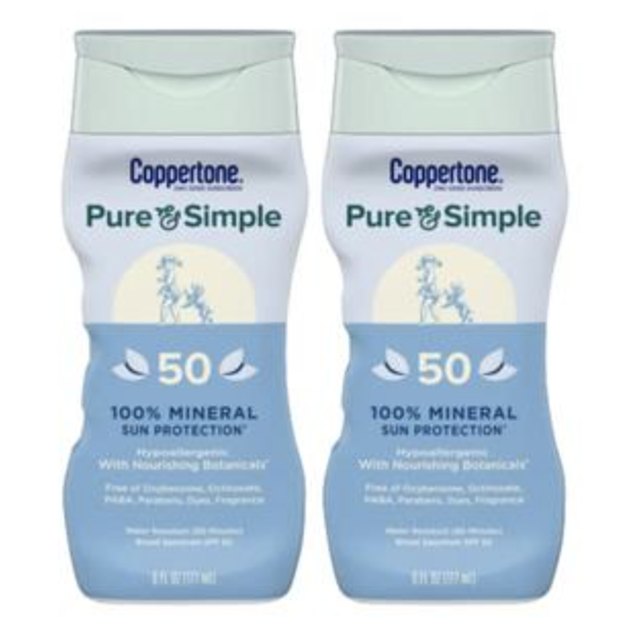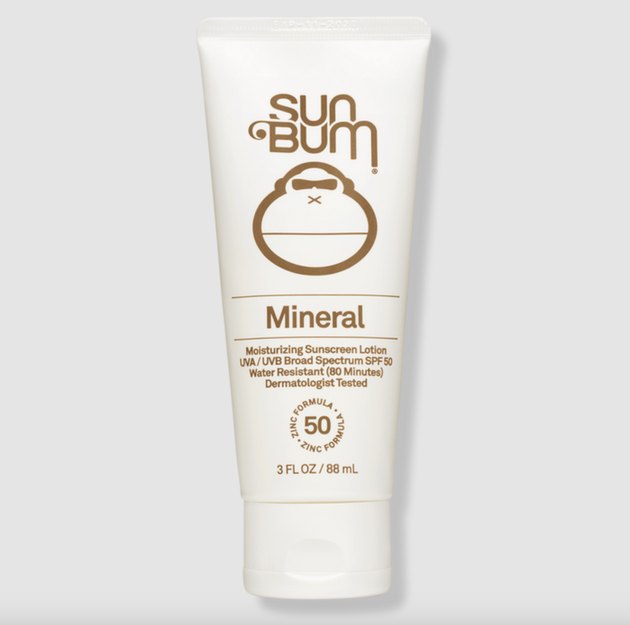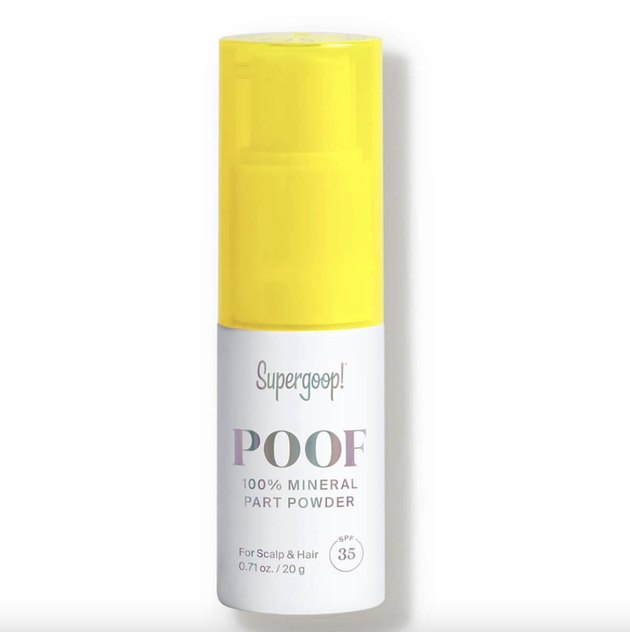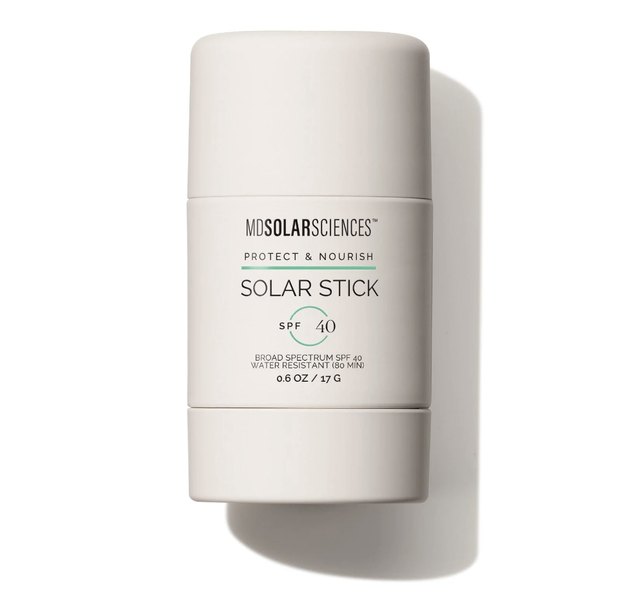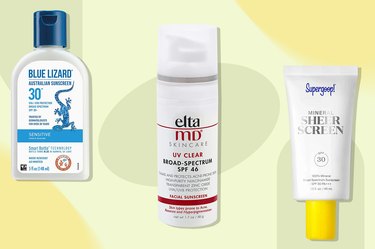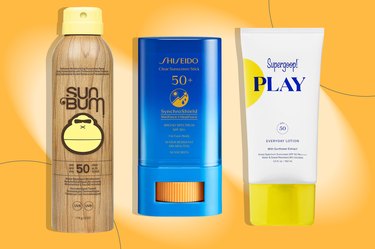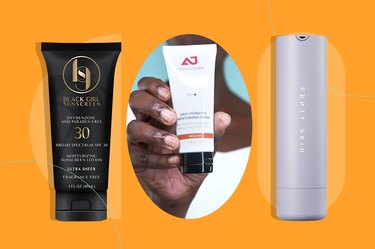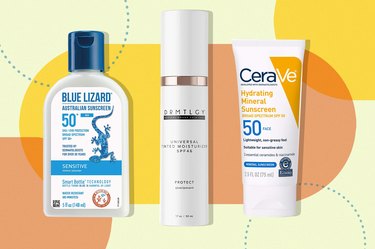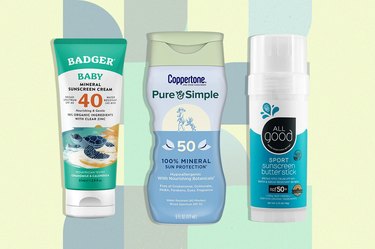
If you're diligent about sunscreen, you apply it to your face every day, all year long. But in the summer, SPF likely gets slathered all over your body — from your scalp to the soles of your feet — multiple times each day. So that's when you might wonder: Which sunscreens are safe?
In some ways, sunscreen selection is simple: The best product is one you'll put on, says Heather Summe, MD, a dermatologist at Lenox Hill Hospital. "Because if you're not putting it on, it doesn't matter," she says.
Video of the Day
Video of the Day
But for both health and environmental reasons, consider digging deeper before making a purchase.
Here's why: A March 2022 review by Valisure, an independent laboratory, revealed some sunscreens contained benzene, a carcinogenic compound. This, along with benzophenone, another carcinogen sometimes found in sunscreens, forms as other ingredients degrade or during the manufacturing process, according to ConsumerLab, an independent organization that tests health products.
Plus, the FDA, which regulates sunscreen safety, is looking into safety information for eight ingredients found in chemical sunscreen. Worth noting: Some of these ingredients (for example, octocrylene and octinoxate) are harmful to coral and other marine life, according to the National Ocean Service.
None of this is cause to skip the SPF, though — the FDA continues to recommend it. And any sunscreen is better than no sunscreen, according to the American Academy of Dermatology (AAD).
"The bottom line is that there's a sunscreen for everyone," Dr. Summe says. No matter what your concerns or priorities, you can find an option that works for you. Just make sure you use it, rather than letting it expire on your shelf, she says.
How We Chose
We've sifted through the options to come up with this list of the safest sunscreens, thanks to input from multiple dermatologists as well as ConsumerLab's review of sunscreen options. All of the products below fit this criteria:
- Made with mineral (rather than chemical) active ingredients
- Broad-spectrum coverage
- SPF 30+
- Water-resistant (unless otherwise noted)
Get more information about how we choose and cover products.
1. EltaMD UV Restore Facial Sunscreen, SPF 40
2. EltaMD UV Pure, SPF 47
3. All Good SPF 50+ Sport Sunscreen Butter Stick
4. TruKid Sport Sunscreen, SPF 30
5. Badger Baby Mineral Sunscreen Cream, SPF 40
6. Thinksport Kids SPF 50+ Mineral Sunscreen
7. CopperTone Pure and Simple Mineral Lotion, SPF 50
8. Sun Bum Mineral Moisturizing Sunscreen Lotion, SPF 50
9. Supergoop! Poof 100% Mineral Part Powder SPF 35
10. MDSolarSciences Mineral Sunscreen Stick, SPF 40
11. La Roche-Posay Anthelios Mineral Sunscreen, SPF 50
What to Look for in a Safe Sunscreen
Keep these factors in mind as you select your next sunscreen.
1. Ingredients
A mineral — as opposed to a chemical — sunscreen may have the edge when it comes to ingredient safety.
The FDA is currently reviewing certain chemical sunscreen ingredients after two studies (one in May 2019 and another in January 2020) found these ingredients were absorbed from the skin into the bloodstream. The ingredients studied included avobenzone, ecamsule, oxybenzone, octocrylene, homosalate, octisalate and octinoxate.
It's important to note that the studies didn't find a specific health risk from the chemicals — they were only designed to determine whether the chemicals were absorbed into the blood. The FDA is still investigating the effects of this absorption.
For those who want to err on the side of caution, though, there are mineral sunscreens made with zinc oxide and/or titanium dioxide. These sunscreens aren't absorbed — they sit on top of the skin to provide a physical barrier against the sun's UV rays. And the FDA says these ingredients are GRASE (aka Generally Recognized as Safe and Effective).
Check the "active ingredients" on the back of the bottle to determine if a sunscreen is made with mineral or chemical ingredients. And beware "mineral-based" sunscreens, which may include both mineral and chemical blockers, Dr. Summe says.
Along with checking the active ingredients, review the rest of the ingredient list, too. If you're allergic to something, avoid it, and, if your skin is sensitive, you'll want to steer clear of fragrances and dyes.
2. Type
Sunscreens are available as powders, gels, lotions and sprays. "A cream or a lotion is going to give you the best coverage," Dr. Summe says.
Sprays are likely best avoided. People don't tend to put on enough or may miss a spot with non-aerosol sprays, Dr. Fishman notes. And aerosol sprays are bad for both the environment and your lungs, she says. Generally it's best to avoid powders, too. They often don't provide sufficient sun protection.
3. SPF
Look for an SPF that's 30 or higher. But don't get tricked by the SPF. No matter how high it is, you still need to reapply every two hours, Dr. Summe says. That's especially true if you're sweating or in the water.
4. Water- and Sweat-Resistant
If you're going to be swimming or exercising outdoors, choose a water-resistant option, Dr. Fishman says.
5. Broad Spectrum
Always make sure the sunscreen is labeled broad spectrum. If it's just an SPF, it won't provide UVA protection, just UVB, Dr. Fishman says.
Tip
When you apply sunscreen, do so liberally. For your face, neck and ears, that means about a teaspoon, or an amount the size of a nickel. And it takes roughly a shot glass-worth of sunscreen to cover your body, Dr. Summe says. “Most people aren’t putting enough on, and aren’t reapplying frequently enough,” she says.
Alternatives to Sunscreen
The AAD also recommends taking these two key precautions to avoid sunburns and skin cancer:
- Avoid peak sun: When the sun's strongest, between 10 a.m. and 2 p.m., do your best to stay in the shade.
- Wear protective garb: When you're outside, sun-protective clothing and hats can protect you from UV rays. For the most possible protection, opt for clothes with an ultraviolet protection factor of 50 (UPF 50), which blocks 98 percent of the sun's rays, Dr. Fishman says. And pick a broad-brimmed hat that covers your ears rather than a baseball cap.
- JAMA: "Effect of Sunscreen Application on Plasma Concentration of Sunscreen Active Ingredients"
- Valisure: "VALISURE DETECTS HIGH LEVELS OF KNOWN HUMAN CARCINOGEN BENZENE IN SEVERAL SUNSCREEN PRODUCTS AND REQUESTS FDA ACTIONS"
- ConsumerLab: "What is the best sunscreen based on safety and efficacy?"
- National Ocean Service: "Skincare Chemicals and Coral Reefs"
- FDA: "Sunscreen: How to Help Protect Your Skin from the Sun"
- American Academy of Dermatology Association: "SUNSCREEN FAQS"
- Piedmont Health: "The difference between physical and chemical sunscreen"
- Center for Biological Diversity: "Hawai‘i Senate Bill Bans Harmful Sunscreen Chemicals"
- FDA: "Should You Put Sunscreen on Infants? Not Usually"
- HealthyChildren.org: "Sun Safety: Information for Parents About Sunburn & Sunscreen"
- FDA: "Shedding More Light on Sunscreen Absorption"
- FDA: "An Update on Sunscreen Requirements: The Deemed Final Order and the Proposed Order"
Is this an emergency? If you are experiencing serious medical symptoms, please see the National Library of Medicine’s list of signs you need emergency medical attention or call 911.
